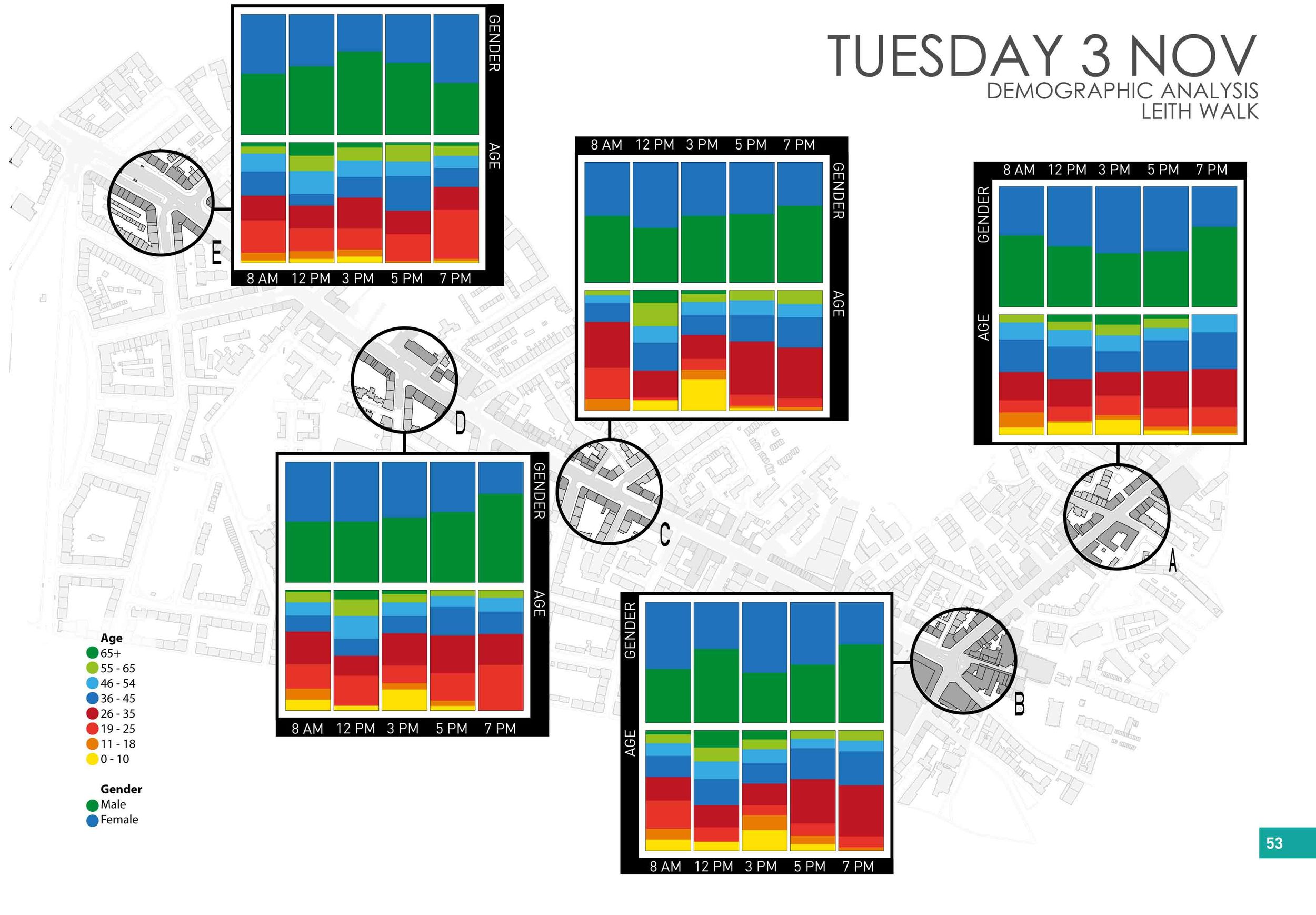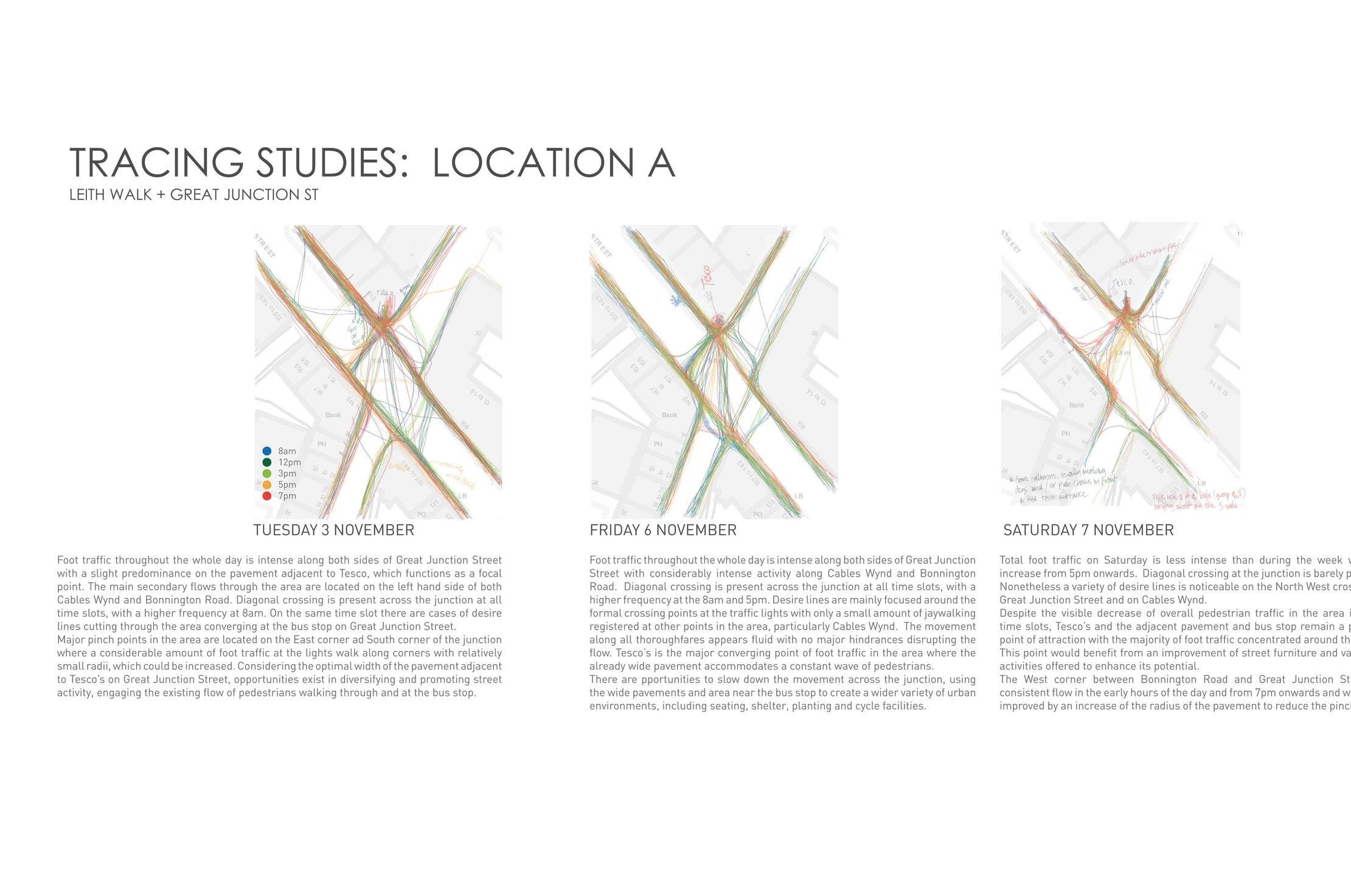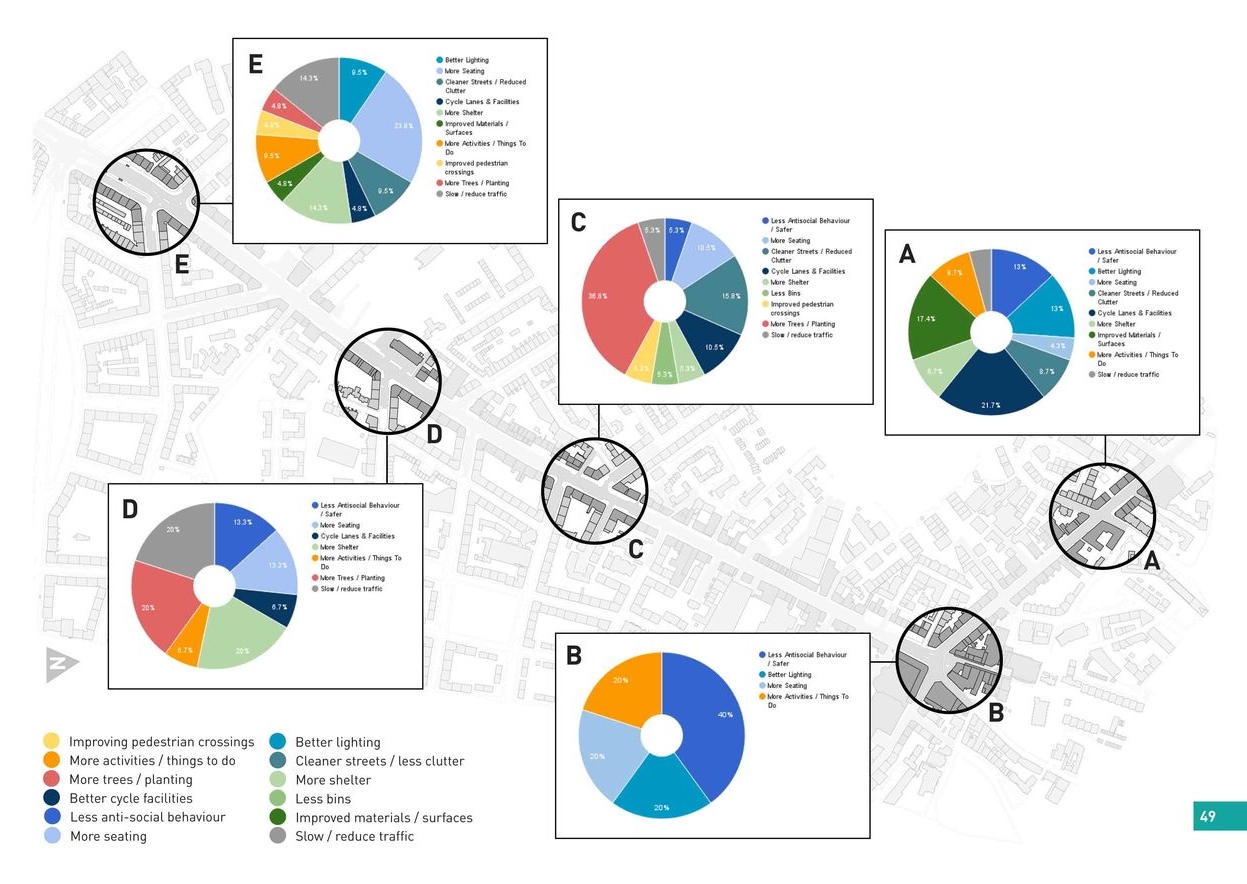
Public Life Studies provide valuable insight into how people currently use city streets and public spaces. By analysing pedestrian movement, social behaviour and usage at different times, they can inform urban planning processes or evaluate the impact of temporary changes.
Public Life Studies support evidence-based planning that enhances public space quality, captures diverse user experiences, and promotes sustainable urban development that responds to people’s real needs and behaviours.
Helping decision-makers understand how our street infrastructure environment impacts pedestrian user experience and movement to enable more vibrant and user-friendly cities. Also called Public Life Street Assessments, I have delivered 11 of these reports for local authority and organisational clients. Combining analysis of on-street user research and place-based built environment data, these studies provide an evidence-base to support design recommendations and decision-making.

Street Assessments and Design Recommendations for 9 Edinburgh town centre high streets
Whilst co-Founder and Director at HERE+NOW, I acted as Lead Consultant for client City of Edinburgh Council to project manage and deliver 9 of Public Life Street Assessment reports, combining user research, data and design of these town centre street environments across Edinburgh. The full reports are available on the Planning Edinburgh website.
These street assessments give insight into how the built environment of each town centre is currently functioning in terms of public life, with a particular focus on pedestrian and cyclist user experience. My role involved designing this research, leading the team of researchers, analysing data and summarising this and any subsequent design recommendations in a comprehensive report.
Methodologies used included on-the-ground user interviews and direct observation of pedestrians and cyclists, feeding in to evidence-based decision-making for street design improvements. The insight provided is based on rigorous data and analysis of each street environment’s movement and place functions and current user experience.
Two Public Life Studies as a baseline for impact evaluation of temporary high street infrastructure pilots
As part of project Future of the High Street I led a team to deliver a number of temporary street infrastructure pilots on Dalkeith and Geogie-Dalry high streets for Edinburgh Futures Institute. I trained a team of researchers to deliver Public Life Studies as a means of establishing a baseline to better understand existing pedestrian user experience to inform design decisions, followed up by a repeated study with the pilots in situ to allow impact evaluation post occupancy. This revealed interesting spatial user experience findings and helped provide data-driven evidence-based urban design decision-making as part of the project legacy.
Methodology
To carry out Public Life Street Assessments, direct observation methodologies are used in combination with qualitative semi-structured user interviews, and the expertise and observations of the research team of landscape architects and urban designers. Together this mixed method approach enables a large amount of useful data and analysis regarding the town centres in terms of their existing public life, user experience, and movement and place functions.
The suite of research tools and techniques used represent current best practice based on methodologies advocated by Gehl Architects, and were complemented by our own expertise and development of a series of analysis tools. Research is carried out in a standardised consistent manner by a team of researchers across multiple locations, at different times of day and on different days of the week to ensure the maximum diversity of usage patterns is captured.
Collection of this data, its analysis and interpretation in terms of both the whole town centre and selected site-specific locations, gives incredible insight into the ways the street or town centre currently functions for users in terms of movement and as a place. This analysis is used in combination with the 12 Design Principles for Healthy Public Spaces I developed during my Masters. These principles were based on a synthesis of the most pertinent academic literature to date. The output is a report detailing this evidence and the way it can be used to target improvements in these places to create most impact, including a holistic series of design recommendations aimed at creating a place with enhanced conditions for walking and cycling, as well as opportunities for public life.





